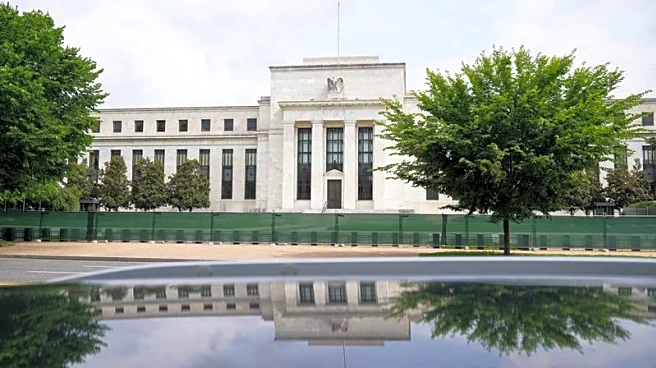What's Happening?
Gold prices have surged to new highs, reaching approximately $4,250 per ounce, following a week of significant volatility. The price movements are driven by factors such as tariff disputes, a prolonged
U.S. government shutdown, and expectations for an interest rate cut by the Federal Reserve at its upcoming meeting on October 28-29. The combination of these elements has increased market uncertainty, leading to a higher floor for gold prices as traders navigate supply chain dynamics, growth concerns, and inflation spillovers.
Why It's Important?
The recent volatility in gold prices highlights the metal's role as a safe-haven asset during times of economic and political uncertainty. As traders anticipate the Federal Reserve's monetary policy decisions, gold's appeal as a hedge against inflation and geopolitical risks becomes more pronounced. The ongoing government shutdown and tariff tensions contribute to the demand for gold, as investors seek stability amid market fluctuations. The potential for further price increases underscores the importance of gold in investment portfolios, particularly in uncertain economic environments.
What's Next?
The trajectory of gold prices will be influenced by the Federal Reserve's actions at its upcoming meeting, as well as developments in the U.S. government shutdown and trade relations. If the shutdown continues and the Fed signals an easing direction, gold prices could remain elevated and test higher ranges. Conversely, a resolution to the shutdown or a hawkish surprise from the Fed could lead to a retracement in gold prices. Investors will be closely monitoring these factors to assess the potential impact on gold's value and market dynamics.
Beyond the Headlines
The volatility in gold prices reflects broader economic and geopolitical challenges, including trade tensions and policy uncertainty. Gold's performance is tied to its ability to provide a hedge against these risks, making it a critical component of investment strategies. The metal's price movements are influenced by various factors, including currency fluctuations and cross-asset environments, which can affect its appeal as a safe-haven asset. Understanding these dynamics is essential for investors seeking to navigate the complexities of the gold market.












